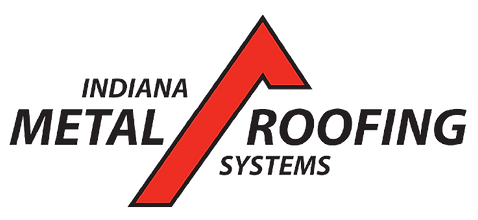Comprehensive Guide to Roof Ventilation Systems
- Joseph Justice
- Feb 25
- 3 min read
Proper roof ventilation is an essential yet often overlooked aspect of maintaining the longevity and energy efficiency of your home. A well-ventilated roof allows hot air and moisture to escape, preventing damage to both the roof structure and the interior of your home. Indiana Metal Roofing Systems offers professional solutions to homeowners in Fort Wayne, IN, ensuring optimal roof ventilation that enhances your home's comfort and durability.

Why Roof Ventilation Matters
Roof ventilation plays a critical role in maintaining the overall health of your roof and attic space. Without adequate ventilation, moisture buildup can lead to mold, mildew, and even structural damage. It also helps regulate temperature, reducing cooling costs in summer and preventing ice dams during winter.
1. Types of Roof Ventilation Systems
a. Ridge Vents
Ridge vents are installed along the peak of the roof and allow warm air to escape from the attic. Since hot air naturally rises, ridge vents are particularly effective at removing excess heat from the attic space.
b. Soffit Vents
Soffit vents are located under the eaves of the roof and allow fresh, cool air to enter the attic. These vents work in tandem with ridge vents, creating a continuous airflow that keeps the attic temperature balanced.
c. Gable Vents
Gable vents are installed on the exterior walls near the roof's peak. These vents help expel hot air, particularly in homes with steep or complex roof structures.
d. Turbine Vents
Also known as "whirlybird" vents, turbine vents use wind power to spin and draw hot air out of the attic. They are particularly useful in areas with consistent winds, offering an energy-efficient way to ventilate the roof.
Fact to Consider:
According to the U.S. Department of Energy, improper roof ventilation can reduce the lifespan of roofing materials by 25%, making it crucial to ensure adequate airflow in your roofing system.
How Proper Ventilation Benefits Your Roof
2. Extends Roof Lifespan
A well-ventilated roof reduces the risk of overheating and moisture buildup, two factors that can significantly shorten the lifespan of your roofing materials.
3. Prevents Ice Dams
In winter, inadequate ventilation can lead to the formation of ice dams. These occur when warm air from the attic melts snow on the roof, only for it to refreeze at the edges, causing blockages and potential leaks. Proper ventilation keeps attic temperatures consistent, preventing this costly issue.
4. Reduces Energy Costs
Roof ventilation helps keep your attic cool, which in turn reduces the strain on your HVAC system. During the hot summer months, proper ventilation can lower cooling costs by allowing hot air to escape, reducing the need for air conditioning.
Signs of Poor Roof Ventilation
It’s essential to know the signs of poor roof ventilation so you can address the issue before it causes damage. Common indicators include:
Excessive Heat in the Attic: If your attic is unbearably hot during the summer, it could be a sign that your roof ventilation is inadequate.
Mold or Mildew: Moisture buildup in the attic can lead to mold or mildew growth, indicating that the roof isn't venting properly.
Warped Shingles or Roofing Materials: Excessive heat can cause roofing materials to warp or degrade faster than expected.
Improving Your Roof Ventilation
If your home shows signs of poor ventilation, it may be time to upgrade your roof’s ventilation system. Indiana Metal Roofing Systems can help you choose the right type of vents for your specific roof design, ensuring that your attic stays cool and dry. Upgrading your ventilation system not only extends the life of your roof but also improves indoor air quality by reducing humidity and moisture buildup.
For additional tips on roof maintenance and protection, check out our guide on essential roof maintenance tips.
FAQs
How does roof ventilation help in summer?In summer, roof ventilation helps release trapped hot air, reducing the temperature in your attic and lowering cooling costs.
Can poor roof ventilation cause mold growth?Yes, poor roof ventilation can trap moisture in the attic, leading to mold and mildew growth.
Do all homes need soffit vents?Not all homes have soffit vents, but they are essential in ensuring adequate air intake to balance the airflow in homes with ridge or gable vents.
How often should I inspect my roof ventilation system?Roof ventilation systems should be inspected at least twice a year to ensure they are functioning correctly and efficiently.
What’s the best type of roof ventilation for metal roofs?Ridge and soffit vents work best with metal roofs as they provide continuous, balanced airflow.
Conclusion
Proper roof ventilation is critical for maintaining a healthy roof and an energy-efficient home. By choosing the right ventilation system and maintaining regular inspections, you can avoid costly repairs and extend the lifespan of your roofing materials. Indiana Metal Roofing Systems offers expert solutions for ensuring that your home remains safe, comfortable, and energy-efficient for years to come.
Read more about: Effective Ways to Minimize Hail Damage on Your Roof


Comments